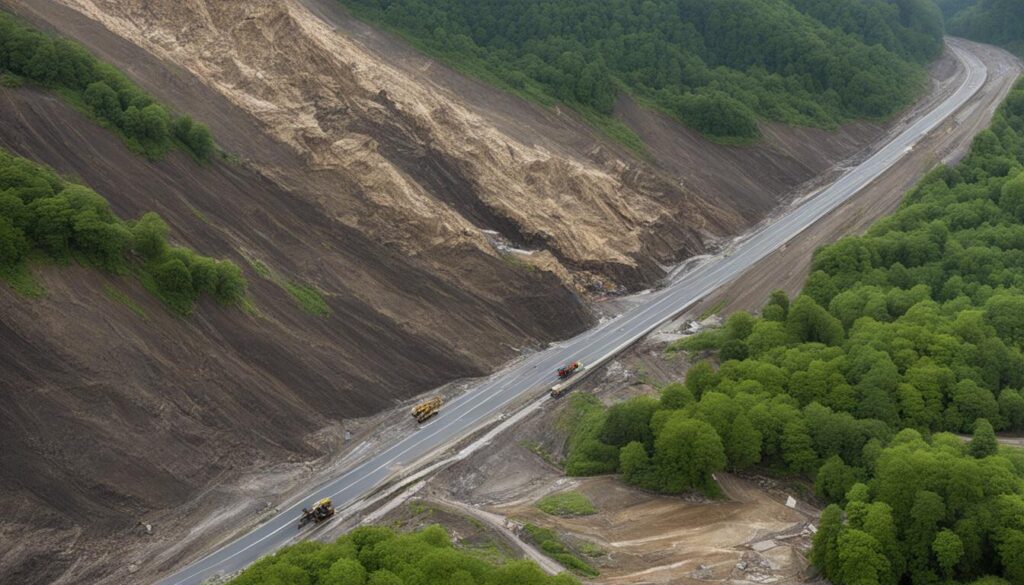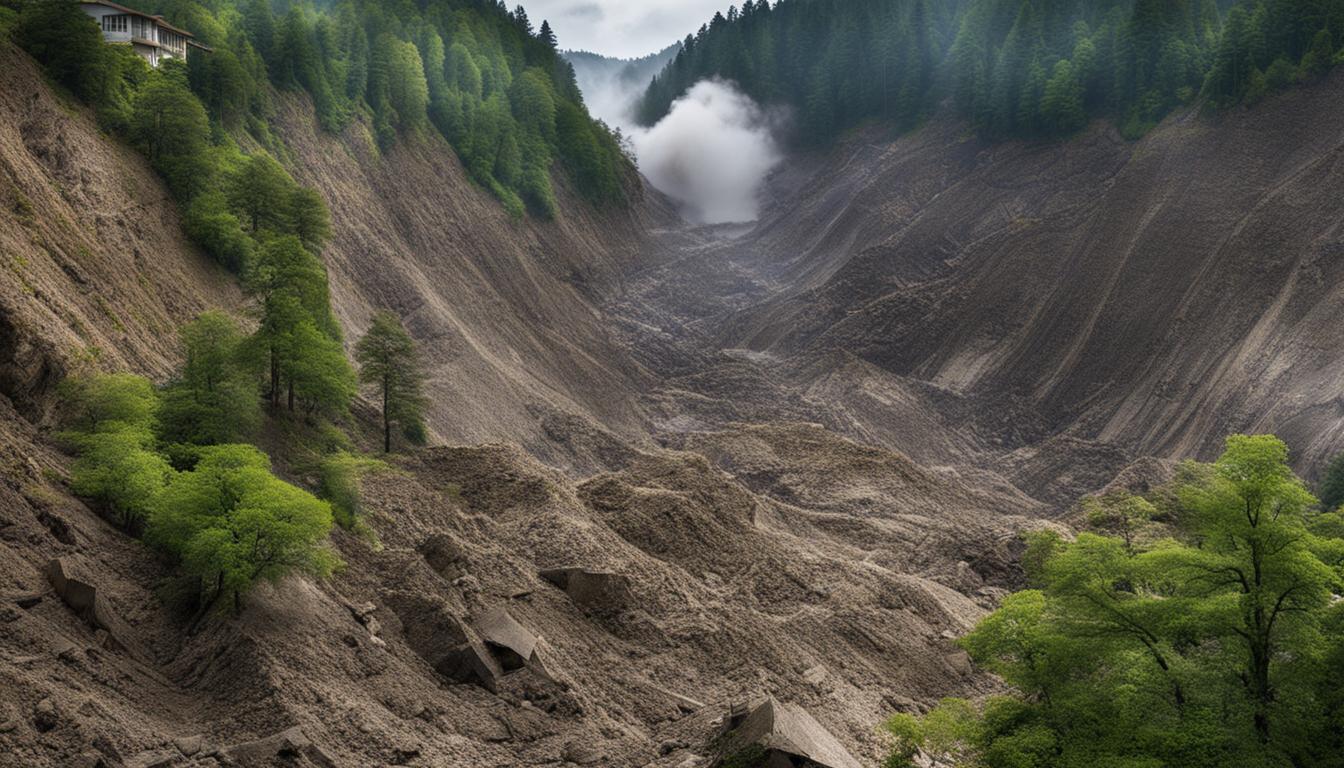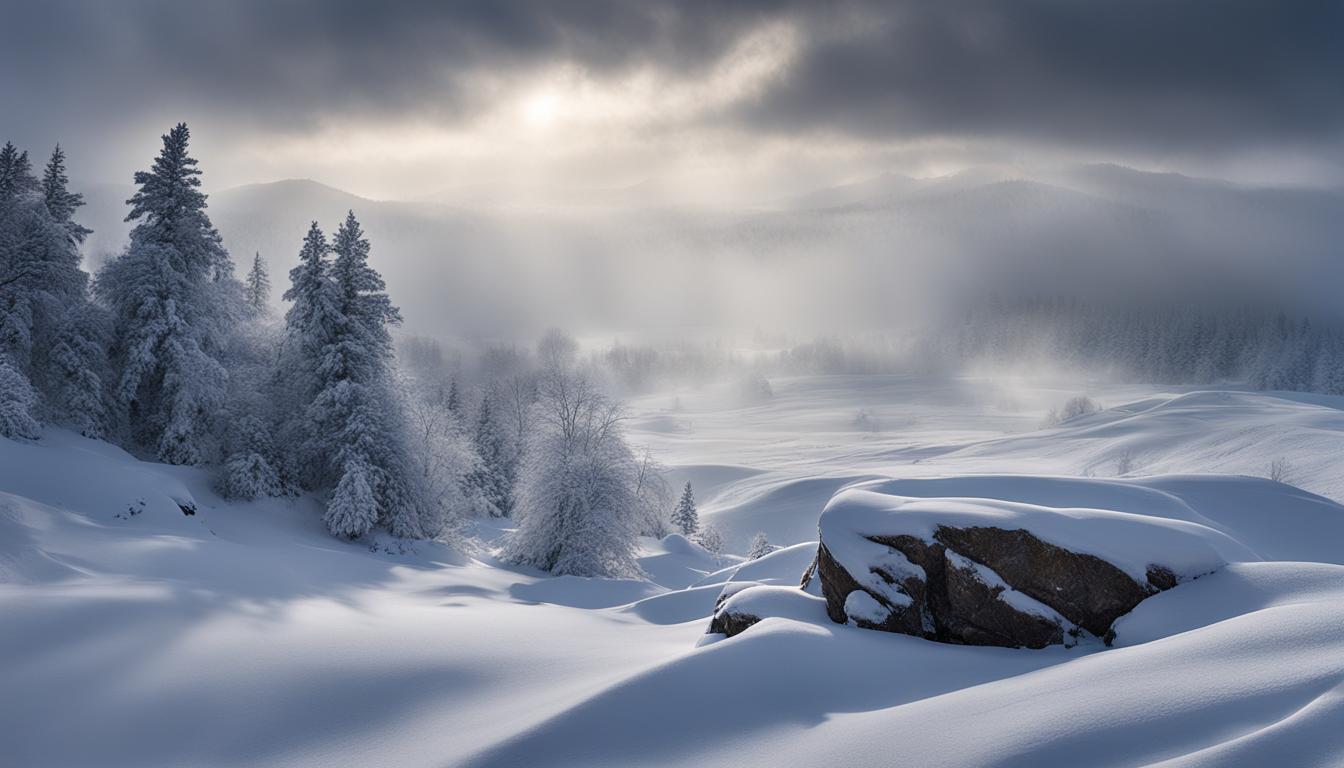In the field of geology, understanding the difference between a landslide and a rockfall is crucial for effectively managing geologic hazards. While both involve movement of rocks or soil on slopes, there are distinct characteristics that set them apart.
A landslide refers to the downward and outward movement of slopes composed of natural rock, soils, or artificial fills. It can encompass various types including slump, rockslide, debris slide, lateral spreading, debris avalanche, earth flow, and soil creep. This movement can occur in both known and unknown areas, and it can happen slowly or rapidly.
On the other hand, a rockfall is the sudden fall of a mass of rocks from a cliff or steep slope. It is the fastest type of landslide and is most commonly observed in mountainous or steep areas, especially during early spring.
Both landslides and rockfalls can have severe consequences, including damage to buildings, roads, and infrastructure, as well as an increased risk to human life. Therefore, it is essential to have proper prevention and mitigation measures in place to mitigate these hazards.
- A landslide involves downward and outward movement of slopes composed of natural rock, soils, or artificial fills.
- A rockfall is the sudden fall of a mass of rocks from a cliff or steep slope.
- Landslides can occur in various forms, while rockfalls are the fastest type of landslide.
- Both landslides and rockfalls can cause significant damage to infrastructure and pose risks to human life.
- Implementing prevention and mitigation measures is crucial in minimizing the occurrence and consequences of these hazards.
Causes and Origins of Landslides and Rockfalls
Landslides and rockfalls can occur due to various causes and factors. Understanding these triggers is essential for implementing effective prevention and mitigation measures. Let’s explore the main factors behind landslides and rockfalls:
Landslide Causes:
- Geological Structures: Geological features such as weak rock layers, faults, or fractures can contribute to landslides.
- Rock Characteristics: Certain types of rocks, such as those with low cohesion or high water content, are more prone to landslides.
- Slope Inclination: Steep slopes or hillsides with a high angle of inclination are susceptible to landslides, especially during heavy rainfall or seismic activities.
- Soil Compaction Changes: Alterations in soil density or compaction, often caused by construction activities or excessive water saturation, can trigger landslides.
- Wildfires: Severe wildfires can destroy vegetation, leaving slopes vulnerable to landslides as the root systems that stabilize the soil are lost.
Rockfall Causes:
- Erosion: Continuous erosion of the earth around larger rocks can weaken the support system, leading to rockfalls.
- Freezing and Thawing Cycles: The repeated freezing and thawing of water within cracks in rocks can cause them to fracture and eventually fall.
To mitigate the risks associated with landslides, various prevention techniques can be employed:
- Slope Stabilization: Implementing engineering measures such as retaining walls, soil nails, or terracing can help stabilize slopes and prevent landslides.
- Drainage Systems: Proper drainage systems can redirect water away from slopes, reducing the risk of soil saturation and landslides.
- Vegetation Management: Maintaining vegetation cover on slopes helps to stabilize the soil by preventing erosion and increasing slope cohesion.
Rockfall mitigation measures focus on minimizing the impact of falling rocks:
- Rockfall Barriers: Installing barriers made of steel cables or mesh nets can help intercept falling rocks and prevent them from reaching roads or structures.
- Slope Stabilization: Similar to landslide prevention, slope stabilization techniques can be employed to mitigate rockfall risks by securing loose rocks and preventing erosion.
- Regular Inspection and Maintenance: Conducting regular inspections of potentially unstable areas and ensuring timely maintenance can help identify and address rockfall hazards.
Implementing these measures is crucial for minimizing the occurrence and consequences of landslides and rockfalls, safeguarding both infrastructure and human lives.
Impacts and Consequences of Landslides and Rockfalls
The impacts of landslides and rockfalls can be devastating, causing significant damage to structures, roads, and infrastructure, as well as posing a serious threat to human life. When a landslide occurs, the downward and outward movement of slopes can result in the loss of property and lead to economic consequences for affected communities. Rockfalls, characterized by the sudden fall of rocks from cliffs or steep slopes, can also have dire consequences, especially in popular hiking or mountainous areas.
The consequences of landslides and rockfalls vary depending on the size and severity of the event, as well as the location and vulnerability of the affected areas. In some cases, entire communities may be displaced, and lives may be lost. The destruction of infrastructure, such as roads and bridges, can disrupt transportation systems and hinder rescue and recovery efforts. The economic impact can be significant, with costs associated with rebuilding, relocation, and the loss of business and tourism revenue.
“The destructive power of landslides and rockfalls cannot be underestimated. They can occur with little warning and cause extensive damage and loss of life. It is imperative that communities implement proactive measures to assess and manage the risk of these geologic hazards.”
To mitigate the impacts of landslides and rockfalls, prevention measures and early warning systems are crucial. Implementing slope stabilization techniques, such as retaining walls and erosion control structures, can help to reduce the likelihood of slope failure. Drainage systems can help to manage water infiltration and prevent saturation of the soil, which can contribute to landslides. Regular inspections of potentially unstable areas and the implementation of maintenance programs can help identify and address potential risks before they escalate.
Furthermore, public awareness and education play a vital role in reducing the impact of landslides and rockfalls. By understanding the signs of instability and promoting responsible land management practices, communities can be better prepared and equipped to respond effectively to these hazards.
Table: Comparison of Landslides and Rockfalls
| Landslides | Rockfalls |
|---|---|
| Downward and outward movement of slopes | Sudden fall of rocks from cliffs or steep slopes |
| Various types, including slump, rockslide, and debris slide | Fastest type of landslide |
| Can cause damage to structures, roads, and infrastructure | Can cause injuries or fatalities |
| Result in loss of property and economic consequences | Common in mountainous or steep areas during early spring |
Understanding the differences between landslides and rockfalls is crucial for effective hazard management. By implementing preventive measures, raising awareness, and promoting responsible land management practices, communities can minimize the occurrence of these geologic hazards and protect both people and property.

Assessing and Managing the Risk of Landslides and Rockfalls
Assessing and managing the risk of landslides and rockfalls is of paramount importance to ensure public safety and minimize potential damage. Geologic and soil hazards can pose significant risks to communities, infrastructure, and human life. By conducting comprehensive assessments and implementing effective risk management strategies, the potential impacts of these hazards can be reduced.
Geotechnical reports play a crucial role in assessing the risk of landslides and rockfalls. These reports provide detailed information about the geological conditions, slope stability, and potential hazards in a specific area. They help identify areas that are susceptible to landslides and rockfalls, enabling communities to make informed decisions about safe development practices.
Local planners and authorities should collaborate with geologists and experts to assess the specific risks faced by their communities. By utilizing national and state data sources, such as the Colorado Geological Survey, planners can access valuable information about hazard risks and historical events in their region. This data can aid in the identification of high-risk areas and the implementation of appropriate mitigation measures.
One effective approach to landslide and rockfall risk management is the utilization of established frameworks and guidelines. The Australian Geomechanics Society, for example, has developed comprehensive guidelines that provide a systematic approach to assessing and mitigating geologic hazards. These frameworks assist in the identification of potential risks, formulation of risk management plans, and the implementation of appropriate mitigation measures.
Example of Geotechnical Report Recommendations:
| Recommendation | Description |
|---|---|
| Implement slope stabilization measures | Stabilize slopes using techniques such as retaining walls, rock bolting, or soil nailing to prevent slope failure. |
| Establish drainage systems | Install adequate drainage systems to manage water runoff and reduce the saturation of soils, which can increase the risk of landslides. |
| Regular inspection and maintenance | Perform regular inspections of potentially unstable areas and ensure proper maintenance to identify and address any signs of instability. |
| Vegetation management | Implement vegetation management practices to stabilize slopes, as plant roots can help bind soil and reduce the risk of landslides. |
By adopting a proactive approach and implementing appropriate measures based on geotechnical reports and guidelines, communities can effectively assess and manage the risks associated with landslides and rockfalls. This will help safeguard lives, infrastructure, and the overall well-being of the affected areas.

Conclusion
In conclusion, understanding the difference between landslides and rockfalls is crucial for effective hazard management. Landslides involve the downward movement of slopes composed of rock, soil, or artificial fills, while rockfalls refer to the sudden fall of rocks from cliffs or steep slopes.
Both landslides and rockfalls can have significant impacts on infrastructure and pose risks to human life. To prevent these geologic hazards, it is essential to implement proactive measures. Techniques such as slope stabilization, drainage systems, and regular inspections can help minimize the occurrence and consequences of landslides and rockfalls.
By prioritizing safety and employing appropriate strategies, communities can better prepare for these hazards. Through continuous efforts in landslide prevention and rockfall mitigation, we can protect both people and property from the devastating effects of these natural events.
FAQ
What is a landslide?
A landslide refers to the downward and outward movement of slopes composed of natural rock, soils, or artificial fills.
What is a rockfall?
A rockfall is the sudden fall of a mass of rocks from a cliff or steep slope.
What causes landslides?
Landslides can be caused by various factors including geological structures, rock characteristics, slope inclination, changes in soil compaction, and severe wildfires.
What causes rockfalls?
Rockfalls are often caused by erosion of earth around larger rocks or the impact of freezing and thawing cycles.
What are the impacts of landslides?
Landslides can cause damage to structures, roads, and infrastructure, and pose a threat to human life. They can also result in the loss of property and economic consequences.
What are the impacts of rockfalls?
Rockfalls can cause injuries or fatalities, especially in popular hiking or mountainous areas.
How can landslides be prevented?
Techniques such as slope stabilization, drainage systems, and vegetation management can help prevent landslides.
How can rockfalls be mitigated?
Rockfall mitigation measures include installing rockfall barriers, slope stabilization, and regular inspection and maintenance of potentially unstable areas.
How can the risk of landslides and rockfalls be assessed?
Geotechnical reports and studies, as well as data from state geological surveys, can help identify areas susceptible to these hazards. Consulting with geologists and experts is recommended for local risk assessment.
What is the difference between landslides and rockfalls?
Landslides involve the downward movement of slopes composed of rock, soil, or artificial fills, while rockfalls refer to the sudden fall of rocks from cliffs or steep slopes.
 Skip to main content
Skip to main content


